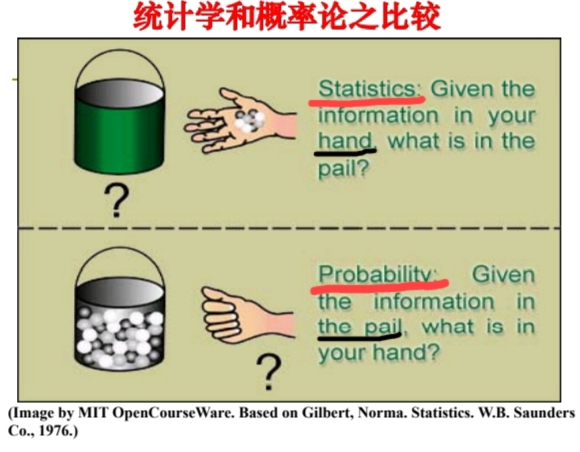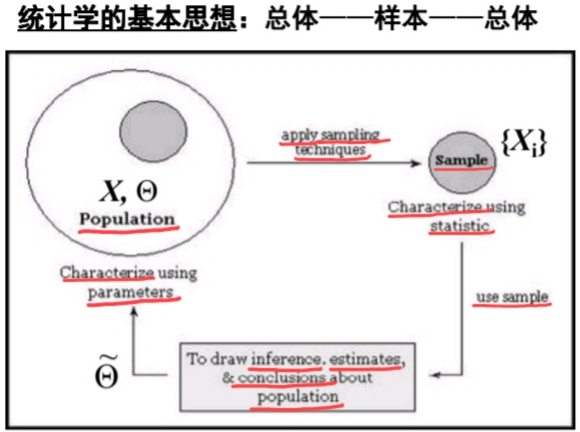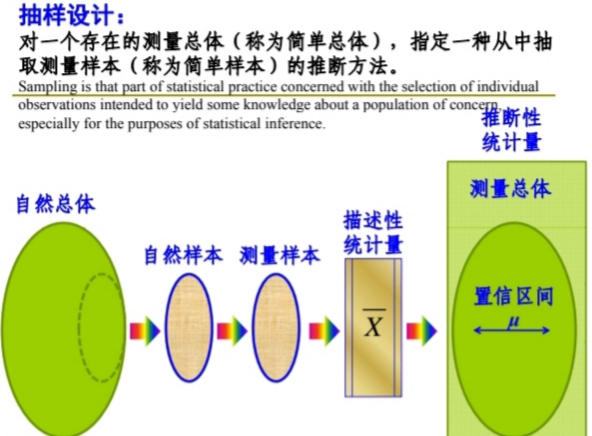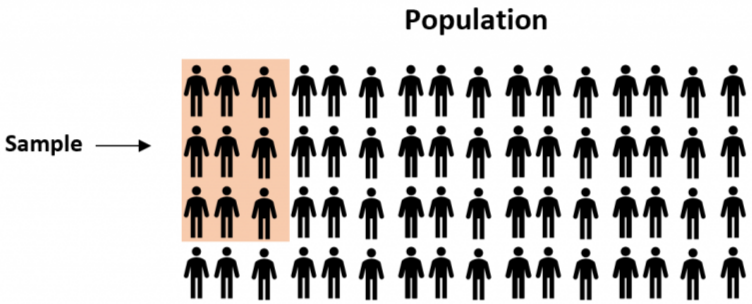SciTech-Mathmatics-Probability+Statistics-Population-Sampling-Types of Sampling Methods (With Examples)
Types of Sampling Methods (With Examples)
BY ZACH BOBBITTPOSTED ON SEPTEMBER 24, 2018




Researchers are often interested in answering questions about populations like:
- What is the average height of a certain species of plant?
- What is the average weight of a certain species of bird?
- What percentage of citizens in a certain city support a certain law?
the FIRST WAY to answer these questions is to go around and collect data on every single individual in the population of interest.
However, IF this is typically too costly and time-consuming which is why researchers instead take a sample of the population and use the data from the sample to draw conclusions about the population as a whole.

There are many different methods researchers can potentially use to obtain individuals to be in a sample. These are known as sampling methods.
In this post we share the most commonly used sampling methods in statistics, including the benefits and drawbacks of the various methods.
Probability Sampling Methods
The first class of sampling methods is known as probability sampling methods because every member in a population has an equal probability of being selected to be in the sample.
Simple random sample

Definition: Every member of a population has an equal chance of being selected to be in the sample. Randomly select members through the use of a random number generator or some means of random selection.
Example: We put the names of every student in a class into a hat and randomly draw out names to get a sample of students.
Benefit : Simple random samples are usually representative of the population we're interested in since every member has an equal chance of being included in the sample.
Stratified random sample

Definition: Split a population into groups. Randomly select some members from each group to be in the sample.
Example: Split up all students in a school according to their grade – freshman, sophomores, juniors, and seniors. Ask 50 students from each grade to complete a survey about the school lunches.
Benefit : Stratified random samples ensure that members from each group in the population are included in the survey.
Systematic random sample

Definition: Put every member of a population into some order. Choosing a random starting point and select every \(\large n\)th member to be in the sample.
Example: A teacher puts students in alphabetical order according to their last name, randomly chooses a starting point, and picks every 5th student to be in the sample.
Benefit : Systematic random samples are usually representative of the population we're interested in since every member has an equal chance of being included in the sample.
Cluster random sample

Definition: Split a population into clusters. Randomly select some of the clusters and include all members from those clusters in the sample.
Example: A company that gives whale watching tours wants to survey its customers. Out of ten tours they give one day, they randomly select four tours and ask every customer about their experience.
Benefit : Cluster random samples get every member from some of the groups, which is useful when each group is reflective of the population as a whole.
Non-probability Sampling Methods
Another class of sampling methods is known as non-probability sampling methods because not every member in a population has an equal probability of being selected to be in the sample.
This type of sampling method is sometimes used because it’s much cheaper and more convenient compared to probability sampling methods. It’s often used during exploratory analysis when researchers simply want to gain an initial understanding of a population.
However, the samples that result from these sampling methods cannot be used to draw inferences about the populations they came from because they typically aren’t representative samples.
Convenience sample
Definition: Choose members of a population that are readily available to be included in the sample.
Example: A researcher stands in front of a library during the day and polls people that happen to walk by.
Drawback: Location and time of day will affect the results. More than likely, the sample will suffer from undercoverage bias since certain people(e.g. those who work during the day) will not be represented as much in the sample.
Voluntary response sample
Definition: A researcher puts out a request for volunteers to be included in a study and members of a population voluntarily decide to be included in the sample or not.
Example: A radio host asks listeners to go online and take a survey on his website.
Drawback: People who voluntarily respond will likely have stronger opinions (positive or negative) than the rest of the population, which makes them an unrepresentative sample. Using this sampling method, the sample is likely to suffer from nonresponse bias – certain groups of people are simply less likely to provide responses.
Snowball sample
Definition: Researchers recruit initial subjects to be in a study and then ask those initial subjects to recruit additional subjects to be in the study. Using this approach, the sample size "snowballs" bigger and bigger as each additional subject recruits more subjects.
Example: Researchers are conducting a study of individuals with rare patterns, but it's difficult to find individuals who actually have the pattern. However, **if they can find just a few initial individuals to be in the study then they can ask them to recruit further individuals they may know through a private support group or through some other means.
Drawback: Sampling bias is likely to occur. Because initial subjects recruit additional subjects, it's likely that many of the subjects will share similar traits or characteristics that might be unrepresentative of the larger population under study. Thus, findings from the sample can't be extrapolated to the population.
Read more about snowballing sampling here.
Purposive sample
Definition: Researchers recruit individuals based on who they think will be most useful based on the purpose of their study.
Example: Researchers want to know about the opinions that individuals in a city have about **a potential new rock climbing gym being placed in the city square so they purposely seek out individuals that hang out at other rock climbing gyms around the city.
Drawback: The individuals in the sample are unlikely to be representative of the overall population. Thus, findings from the sample can't be extrapolated to the population.
SciTech-Mathmatics-Probability+Statistics-Population-Sampling-Types of Sampling Methods (With Examples)的更多相关文章
- Simple Random Sampling|representative sample|probability sampling|simple random sampling with replacement| simple random sampling without replacement|Random-Number Tables
1.2 Simple Random Sampling Census, :全部信息 Sampling: 抽样方式: representative sample:有偏向,研究者选择自己觉得有代表性的sam ...
- PRML读书会第十一章 Sampling Methods(MCMC, Markov Chain Monte Carlo,细致平稳条件,Metropolis-Hastings,Gibbs Sampling,Slice Sampling,Hamiltonian MCMC)
主讲人 网络上的尼采 (新浪微博: @Nietzsche_复杂网络机器学习) 网络上的尼采(813394698) 9:05:00 今天的主要内容:Markov Chain Monte Carlo,M ...
- Probability&Statistics 概率论与数理统计(1)
基本概念 样本空间: 随机试验E的所有可能结果组成的集合, 为E的样本空间, 记为S 随机事件: E的样本空间S的子集为E的随机事件, 简称事件, 由一个样本点组成的单点集, 称为基本事件 对立事件/ ...
- [Bayes] Hist & line: Reject Sampling and Importance Sampling
吻合度蛮高,但不光滑. > L= > K=/ > x=runif(L) > *x*(-x)^/K)) > hist(x[ind],probability=T, + xla ...
- SRS|Stratified sampling|系统抽样|Cluster sampling|multistage sampling|
生物统计学 总体和抽样 抽样方法: ========================================================= 简单随机抽样SRS:随机误差,系统误差 标准误, ...
- [Math Review] Statistics Basic: Sampling Distribution
Inferential Statistics Generalizing from a sample to a population that involves determining how far ...
- [Math Review] Statistics Basic: Estimation
Two Types of Estimation One of the major applications of statistics is estimating population paramet ...
- Sampling and Estimation
Sampling and Estimation Sampling Error Sampling error is the difference between a sample statistic(t ...
- Gibbs sampling
In statistics and in statistical physics, Gibbs sampling or a Gibbs sampler is aMarkov chain Monte C ...
- Create STATISTICS,UPDATE STATISTICS
该命令在一张表或者索引了的视图上更新查询优化统计数字信息. 默认情况下, 查询优化器已经更新了必要的用来提高查询计划的统计信息; 在某些情况下, 你可以通过使用UPDATE STATISTICS 命令 ...
随机推荐
- 基于CARLA与PyTorch的自动驾驶仿真系统全栈开发指南
引言:自动驾驶仿真的价值与技术栈选择 自动驾驶作为AI领域最具挑战性的研究方向之一,其开发流程需要经历"仿真测试-闭环验证-实车部署"的完整链路.其中,高保真仿真平台为算法迭代提供 ...
- JavaScript 没有“包”
前言 除了古老的 C/C++,几乎所有的编程语言都有模块系统,都有官方的包管理器.我们一般不自己实现所有的代码,实际应用开发过程中大量使用开源库和框架.这篇文章演示了如何把自己实现的库变成一个包,一个 ...
- 【记录】ChatGPT|图片预览魔法咒语魔改,使用 ChatGPT 返回大量可以跳转的链接
很早的时候,我已经留意到 ChatGPT 会以返回图片的 markdown 格式来显示图片,很可能拥有一定的图片上传功能,但是它往往会显示得有些问题.一些代码图片之类的或者风景图什么的都不是很会. 但 ...
- K8s Service 示例详解
Kubernetes 官方文档:Services-Networking Service介绍 在kubernetes中,pod是应用程序的载体,我们可以通过pod的ip来访问应用程序,但是pod的ip地 ...
- 国际化利器 Intl Messageformat
我们是袋鼠云数栈 UED 团队,致力于打造优秀的一站式数据中台产品.我们始终保持工匠精神,探索前端道路,为社区积累并传播经验价值. 本文作者:霜序 Formats ICU Message string ...
- Gin 实现基础 CRUD 接口
前面2篇讲了关于 gin + mysql + jwt + rbac 等基础 web搭建操作, 主要目的还是学习 go 语言的一些应用工具, 然后本篇继续来实现一个名为 notice 的公告模块, 包含 ...
- 一行Code - 搭建HTTP服务器, 文件 多设备共享
我的痛点是这样的. 我想实现 文件 (代码文件, PPT PDF, WORD, 视频...) 等各种文件, 在 windows 电脑, android 手机, iPad, 及 mac 电脑或者, 或更 ...
- 【网站推荐】推荐几个MCP(Model Context Protocol,模型上下文协议)的网站
MCP网站一:MCP 快速入门 介绍 MCP 快速入门.开发工具.核心架构等内容. https://mcp-docs.cn/introduction MCP网站二:GitHub 官方仓库 由MCP协议 ...
- C语言:高级语言怎样抽象执行逻辑
平时我们做编程的时候,底层 CPU 如何执行指令已经被封装好了,因此你很少会想到把底层和语言编译联系在一起.但从我自己学习各种编程语言的经历看,从这样一个全新视角重新剖析 C 语言,有助于加深你对它的 ...
- 在MySQL数据库中保存布尔型数据
在存储数据时,经常会用到"是"."否"或者"有"."无"这种数据,这种时候就要应用布尔型这种数据类型了.那如何在M ...
